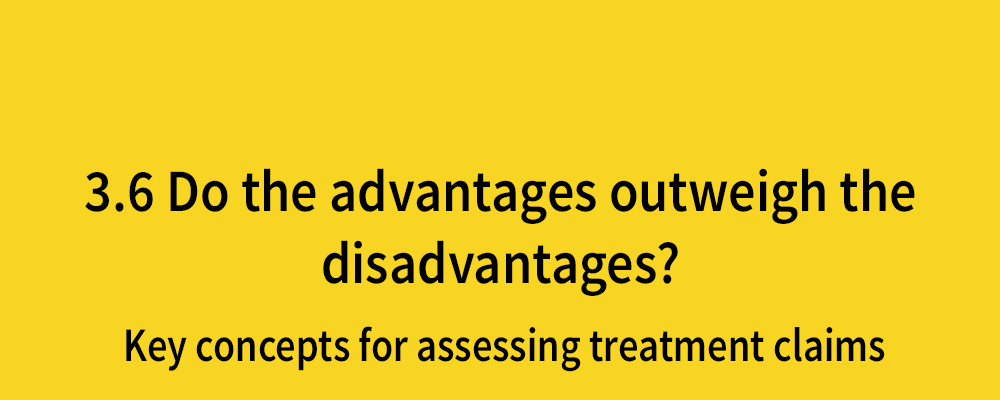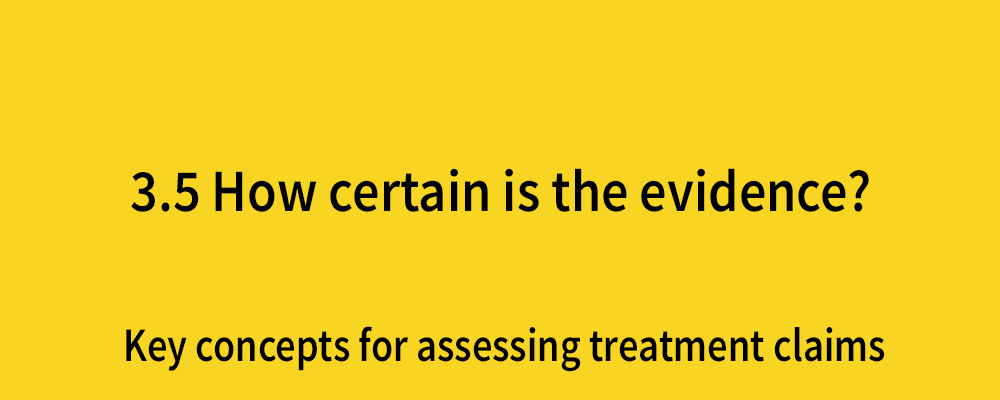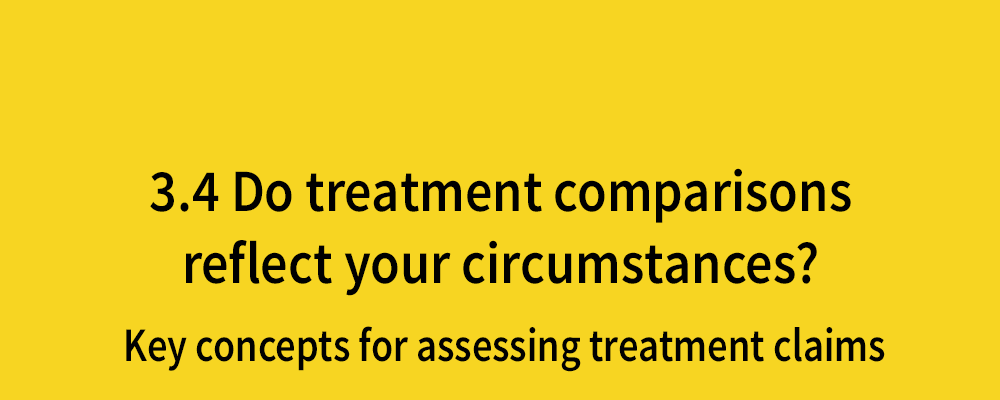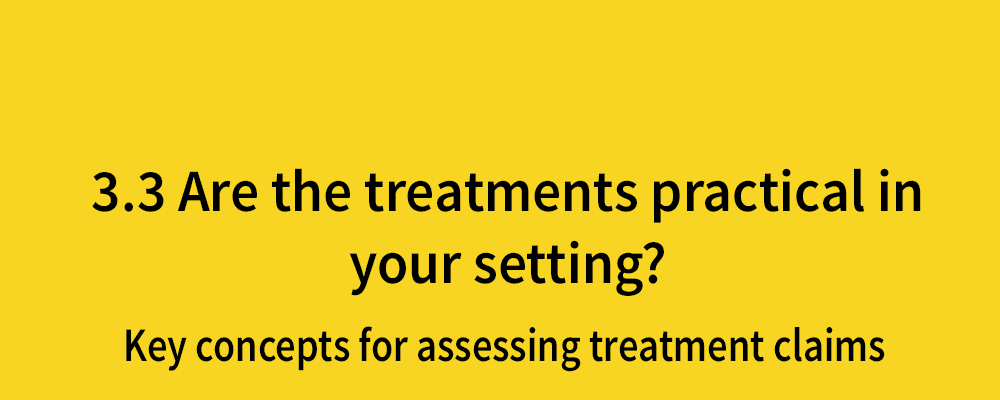Do the advantages outweigh the disadvantages?
Posted on 25th June 2018 by Dennis Neuen

This is the final blog in a series of 36 blogs based on a list of ‘Key Concepts’ developed by an Informed Health Choices project team. Each blog will explain one Key Concept that we need to understand to be able to assess treatment claims.
You’re thinking of taking a treatment yourself. Or prescribing it to one of your patients. How do you decide whether it’s worth it?
Consider this scenario. You could take a pill once, never catch a cold again and experience zero side effects. Sounds fantastic, right? Then you find out that instead, you must take it four times a day for the rest of your life. Then you find out that 50% of people get a daily headache because of the medication. Finally, you find out that the medication increases your risk of death due to stroke or heart attack by 60%.
This over simplified example shows that the decision to use a treatment depends on a balance between the risks and potential benefits of the treatment itself. In some instances, the way in which the scales weigh is overt: a magic pill with no side effects or a life-threatening heart attack or stroke. Unfortunately, in the majority of cases, we don’t have a simple scoring system that allows us to place the pros and cons on each side and observe which way the scales lean; there is no magical answer, it’s a fine judgement that depends on a variety of factors.
So, what are some things that we need to consider?
Is the advantage important?
It is important to remember that a statistically significant result is not always clinically significant. One simple way to assist in making this judgement is to consider the quantity and quality of the effect. Imagine a trial investigating insomnia that shows an intervention that reduces the time taken to fall asleep by 1 minute per night. Whilst the result may be ‘statistically significant’ (p < 0.05), quantitatively, it is a very small amount. In terms of the quality of the result, is time taken to fall asleep the most clinically significant variable? We must also consider the other variables which may be of more (or less) importance, for example: total length of sleep or quality of sleep. Always consider the quantity (1 minute vs. 15 minutes) and quality (e.g. time to sleep vs. quality of sleep vs. total length of sleep) when considering if an effect is important. There is no point using a treatment if it does not genuinely improve a patient’s life. More information on this concept can be found in the blog Statistical significance vs. clinical significance.
Is the disadvantage important?
Similar to above, disadvantages also vary greatly in their importance depending on their quality and quantity. Consider these two different disadvantages of a new medication to treat pancreatitis: an increased 10% annual-incidence of mortality compared with infrequent (< monthly) nausea and vomiting in 5% of participants who took the medication. It might seem simple that mortality as a quality is much more significant than nausea and vomiting. However, what happens if the mortality risk is now 0.002% and the nausea is experienced in 99% of participants 7-8 times a day? We must balance quantity and quality of both risks and benefits to assist in judging whether an effect is important.
Putting it together
Say that we now have a treatment which has both clinically significant advantages and disadvantages. What now? We must consider the patient in front of us and their values.
What is their baseline risk and severity of symptoms?
The baseline risk is the likelihood of an individual experiencing an undesirable event. Those with higher baseline risk may have a greater benefit from the treatment. Similarly, those with more severe symptoms will have more room for improvement. For example, for a patient suffering from severe and disabling insomnia, the potential benefits of longer and better sleep outweigh the risks. Those with a higher baseline risk, or more severe symptoms, are more likely to favour taking a treatment when assessing the balance between the advantages and disadvantages.
Is the study population applicable to my patient?
If there was a new analgesic medication that was successful in reducing the severity of migraines and headaches, we would want to prescribe it to our patients. What happens if the study included only Caucasian women aged 60-80 with migraines with aura? In our patient, a young indigenous 17-year-old man with migraines without aura could also experience benefit, however its success is not proven in such patients. In this case, the disadvantages may outweigh the advantages.
What other individual factors could contribute to the balance?
If there was a highly successful new chemotherapy drug available for pancreatic cancer, patients would be interested. What happens if it was only available in the metropolitan oncology centre? What happens if it was very expensive with no public funding? Imagine we had a patient, a 78-year-old with no private health insurance living in a remote town (a 15-hour drive from the city), with advanced metastatic disease. What does your patient value? Cost, travel, prognosis and support are just some examples of individual patient characteristics that need to be factored into the equation.
Summary
Always remember, at the end of the day, each individual patient in front of you is different with unique circumstances and preferences. If you are taking the treatment, this also applies to you! You are different to everyone else and not every scenario will apply to yours. We must be able to weigh up: what the benefit and potential risk is, the magnitude and rate of them, the initial baseline risk, severity of symptoms and other individual factors before we can decide whether a treatment should or should not be taken. Whether or not you are a clinician prescribing for a patient or taking a treatment yourself, it is important to be able to assess evidence about treatment in individual contexts so we can make informed decisions.




